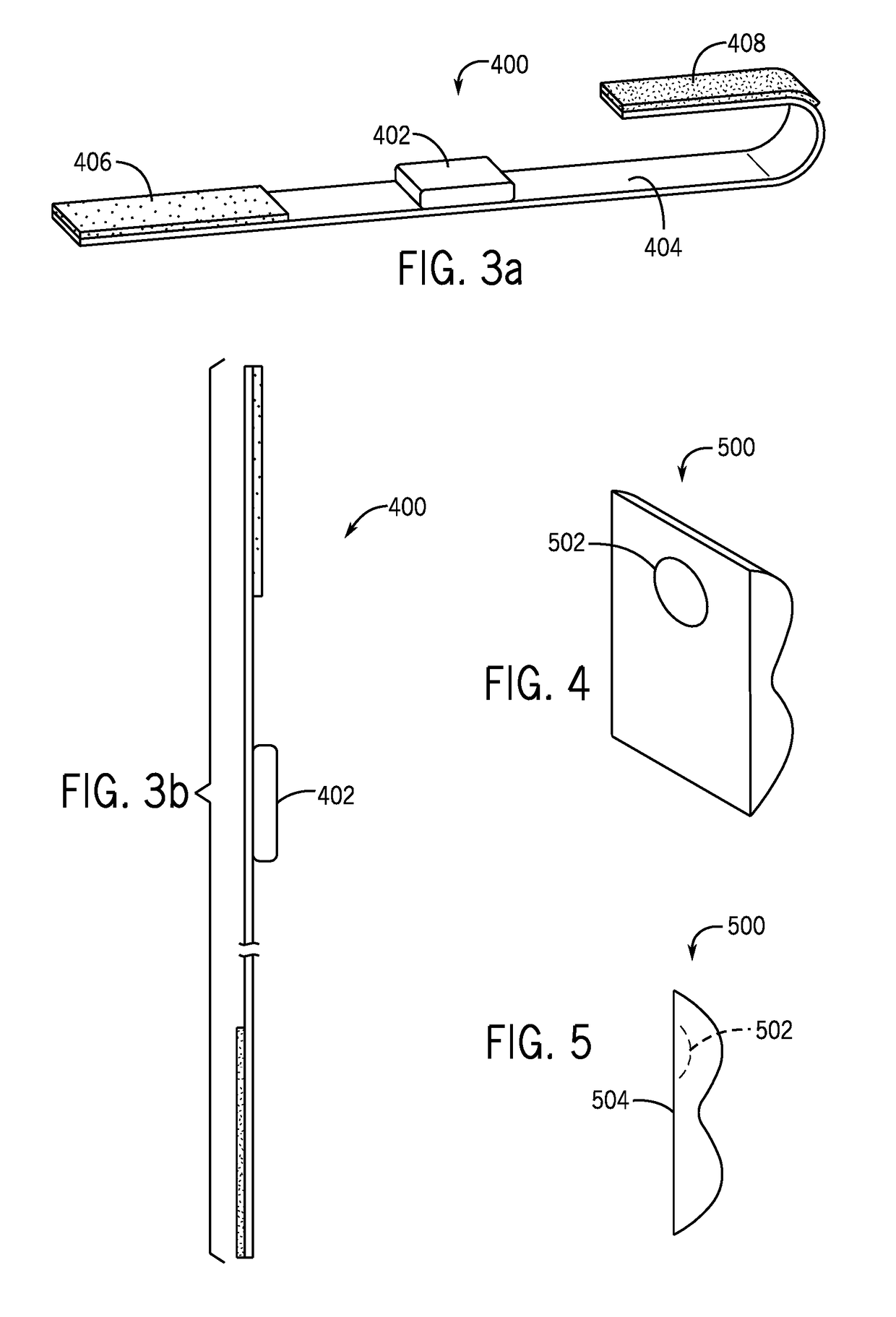Compression Device and Pressure Sensor for Treatment of Abnormal Upper Esophageal Sphincter Functionality
a technology of esophageal sphincter and pressure sensor, which is applied in the field of detection, prevention, treatment and cure of gastroesophageal and gastroesophageal reflux complications, can solve the problems of reducing affecting the quality of life, and affecting the quality of life, and achieves modest improvemen
- Summary
- Abstract
- Description
- Claims
- Application Information
AI Technical Summary
Benefits of technology
Problems solved by technology
Method used
Image
Examples
Embodiment Construction
[0049]A non-pharmacologic device is used to increase intra-luminal pressure within the upper esophageal sphincter (UES) of a patient, such as a human or animal, in order to prevent entry of gastric contents into the pharynx, larynx, or a lung. The device uses external pressure to induce intra-luminal pressure within the UES, by compressing the UES between a cricoid cartilage and a cervical vertebrae and preventing gastroesophageal and gastroesophagopharyngeal reflux. The induced intra-luminal pressure, however, does not occlude the esophagus under all physiological events. The compression device is used to maintain the intra-luminal pressure of the patient within a predetermined range, continuously reinstating the competency of the UES over a period of time. In certain implementations, the intra-luminal UES pressure is induced by applying an external pressure to a patient's cricoid transferring a compressive force through the intermediary tissue of the patient towards the UES, incre...
PUM
 Login to View More
Login to View More Abstract
Description
Claims
Application Information
 Login to View More
Login to View More - R&D
- Intellectual Property
- Life Sciences
- Materials
- Tech Scout
- Unparalleled Data Quality
- Higher Quality Content
- 60% Fewer Hallucinations
Browse by: Latest US Patents, China's latest patents, Technical Efficacy Thesaurus, Application Domain, Technology Topic, Popular Technical Reports.
© 2025 PatSnap. All rights reserved.Legal|Privacy policy|Modern Slavery Act Transparency Statement|Sitemap|About US| Contact US: help@patsnap.com



